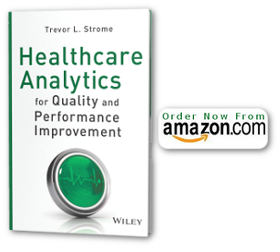- Who is the information end-user? Is the dashboard, report, or other analytics tool being prepared for a quality improvement team, department manager, or chief executive? Is the user likely to have a statistical background, or not?
- What is the information being used for? Is the information being used for real-time or predictive purposes, or is it being used to analyze past performance? Does the user need to focus on individuals (or small groups of individuals), or will the information be used in aggregate? Will the information be used for strategy development and planning, or evaluating outcomes of projects?
- How will the information be accessed? Do the users need the information in real-time dashboards, or printed reports? Will the information be presented “statically”, or will users be able to browse through the results?
- What source data is available? What system(s) does the analytics draw information from? Is the information required by end-users even available? How often is the source system updated? How is the source data accessed?
- How accurate is the source data? What data quality issues exist with the source data? Can data quality be overcome through the use of statistical or other analytic approaches? Do the analytics end-users understand any limitations of the source data?
Quality and performance improvement initiatives can benefit greatly from information that is easily accessed,but only if it’s relevant, accurate and up to date. These questions are certainly no replacement for a thorough requirements analysis. But these questions will help keep in mind that the value of analytics, ultimately, are determined by how well they meet the requirements of the end-users in improving quality and performance within healthcare organizations.

{ 0 comments… add one now }